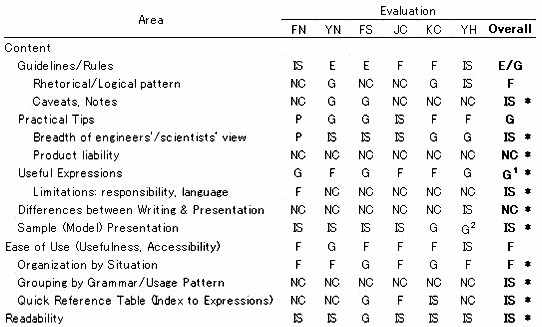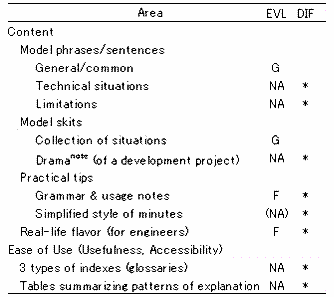May. 10 - 11, 2008. Kyoto, Japan: Doshisha University Shinmachi Campus. (pp. 52 - 59)
A systematic approach to writing EFL self-study books for engineersby Michihiro Hirai (Kanagawa University) |
| Abstract |
|
In writing two self-study EFL books for Japanese engineers (one on technical presentations and the other on meetings), the author emulated the process of product development in terms of four basic phases: market environment analysis, design, production, and quality assurance. Central to success, either in writing a practical book or in developing a new product, is differentiation, which is one of the key criteria in defining value for the market. Thus, in market environment analysis, the author first studied the strengths and weaknesses of existing self-study books, thereby identifying the possible areas of differentiation: content, ease of use, and readability, which were then carefully addressed in the design phase. In content, the author’s decades-long experience as a technical coordinator in an export project brought a real-life flavor to the model situations and presentation. Ease of use was enhanced by quick-access indexes and tables sorting model sentences according to grammatical structures and engineering-specific situations. Readability was achieved by inserting relevant and intriguing episodes. In production, a spreadsheet-based table of contents made the actual writing process more visible and manageable. This article concludes by suggesting this approach is conducive to writing publishable books that meet the market’s needs. Keywords: material writing, professional communication, technical presentation, technical meeting, self-study materials  |




